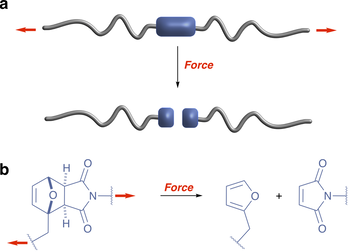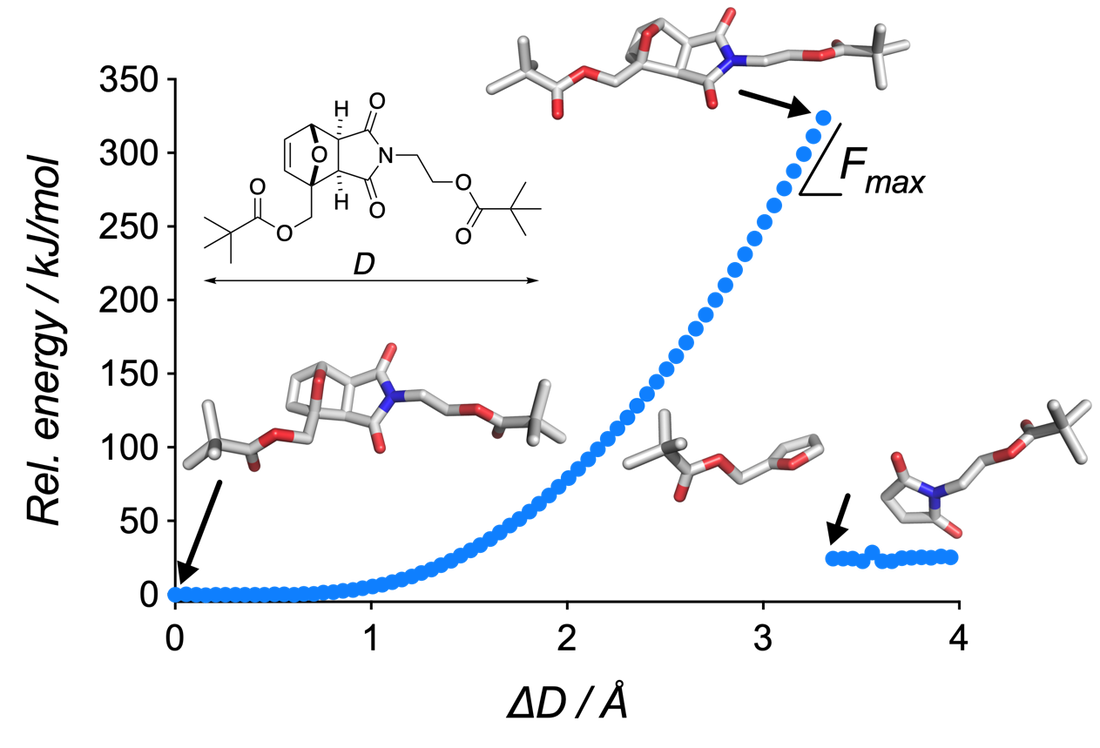Methodology
Concept
Simulation
|
Once the design is established, the mechanical activation is simulated computationally (DFT) using the CoGEF (Constrained Geometries Simulate External Force) technique (DFT B3LYP/6-31G*), where distance D on a model mechanophore is increased interactively and the geometry of the structures minimised at each step. The resulting energy-elongation profile provides information about the activation force (Fmax) and the nature of the scissile bond. The deformation of the molecular skeleton can be visualised in the video.
|
Mechanical activation
Suitable mechanophore designs are synthesised, incorporated in a polymer and activated in solution using high-intensity ultrasound. Indeed, acoustic waves provoke the nucleation, growth, and collapse of microbubbles. As a high-gradient solvodynamic shear field is created in the direct surrounding of collapsing bubbles, any polymer chain in the vicinity is stretched and bond scission occurs if the polymer is long enough (the longer the polymer, the higher the force). Mechanochemical behaviour is further investigated in the solid-state and/or computationally if required.

